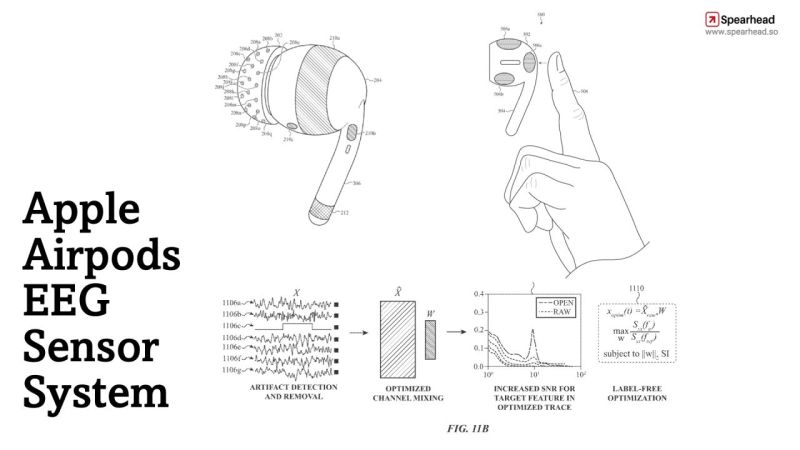Is Apple building a new brain-machine interface?
Apple’s latest patent reveals a groundbreaking innovation – AirPods that can measure your brain’s electrical activity.
The next-gen AirPods could include active and reference electrodes configured to measure biosignals like EEG, EMG, EOG, and more.
This isn’t just about reading brainwaves.
The patent describes a system where the AirPods could have more electrodes than necessary, allowing the device to dynamically select a subset of the electrodes for measuring the biosignals for a given user at a given time. This means the device could adapt to different users or even different times for the same user, providing more accurate and personalized readings.
But why is this important?
These biosignals can provide a wealth of information about our health and well-being. For instance, EEG signals can give insights into brain function and mental states, EMG can indicate muscle activity, and EOG can reveal eye movement patterns.
Imagine a future where your AirPods could detect signs of stress or fatigue, suggest a calming playlist when you’re anxious, or even alert you to potential health issues.
This innovation could revolutionize not just the wearable tech industry, but also healthcare, mental health, and personal well-being. It’s another step towards a future where our devices are not just smart, but ‘neuro-smart’.
#hci #digitalhealthcare #aihealth
Data: PatentlyApple, USPTO Apple Patent pub no. US 2023/0225659 A1

